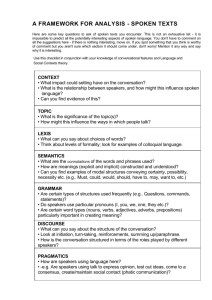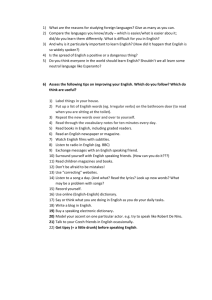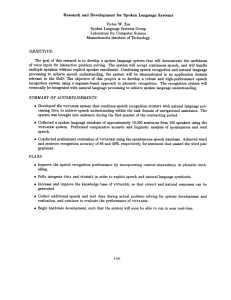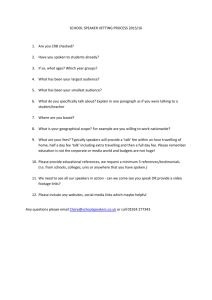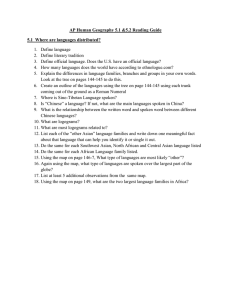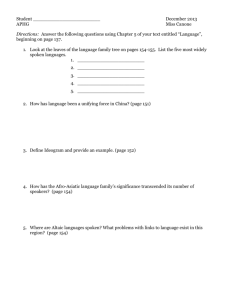Languages and Language Diversity
advertisement
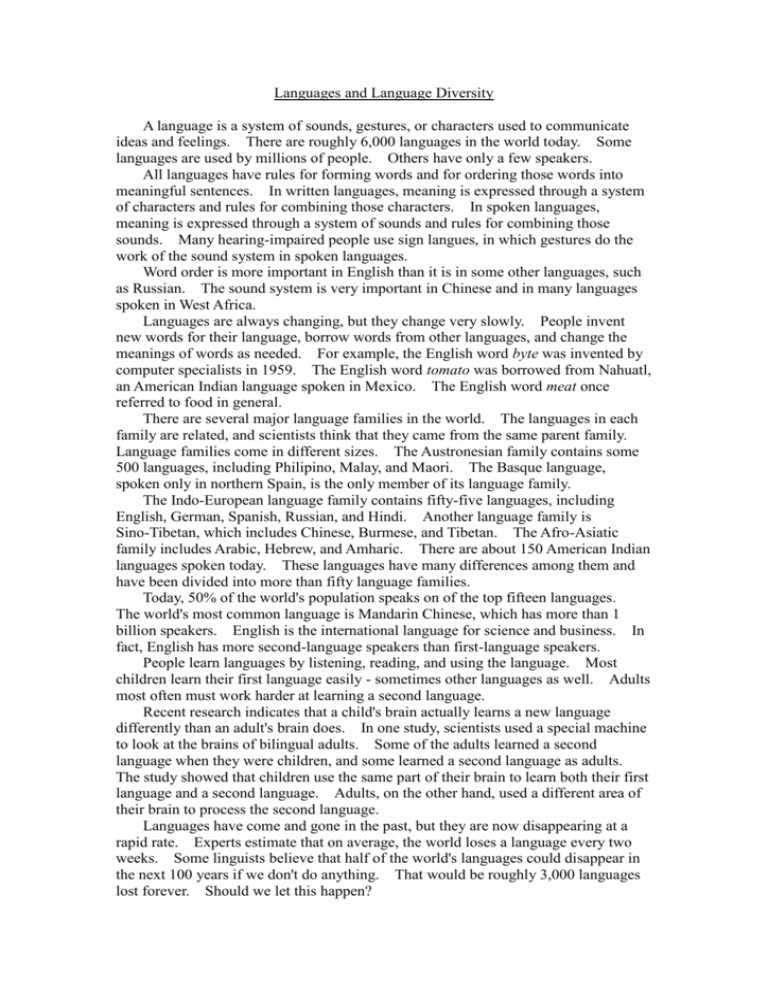
Languages and Language Diversity A language is a system of sounds, gestures, or characters used to communicate ideas and feelings. There are roughly 6,000 languages in the world today. Some languages are used by millions of people. Others have only a few speakers. All languages have rules for forming words and for ordering those words into meaningful sentences. In written languages, meaning is expressed through a system of characters and rules for combining those characters. In spoken languages, meaning is expressed through a system of sounds and rules for combining those sounds. Many hearing-impaired people use sign langues, in which gestures do the work of the sound system in spoken languages. Word order is more important in English than it is in some other languages, such as Russian. The sound system is very important in Chinese and in many languages spoken in West Africa. Languages are always changing, but they change very slowly. People invent new words for their language, borrow words from other languages, and change the meanings of words as needed. For example, the English word byte was invented by computer specialists in 1959. The English word tomato was borrowed from Nahuatl, an American Indian language spoken in Mexico. The English word meat once referred to food in general. There are several major language families in the world. The languages in each family are related, and scientists think that they came from the same parent family. Language families come in different sizes. The Austronesian family contains some 500 languages, including Philipino, Malay, and Maori. The Basque language, spoken only in northern Spain, is the only member of its language family. The Indo-European language family contains fifty-five languages, including English, German, Spanish, Russian, and Hindi. Another language family is Sino-Tibetan, which includes Chinese, Burmese, and Tibetan. The Afro-Asiatic family includes Arabic, Hebrew, and Amharic. There are about 150 American Indian languages spoken today. These languages have many differences among them and have been divided into more than fifty language families. Today, 50% of the world's population speaks on of the top fifteen languages. The world's most common language is Mandarin Chinese, which has more than 1 billion speakers. English is the international language for science and business. In fact, English has more second-language speakers than first-language speakers. People learn languages by listening, reading, and using the language. Most children learn their first language easily - sometimes other languages as well. Adults most often must work harder at learning a second language. Recent research indicates that a child's brain actually learns a new language differently than an adult's brain does. In one study, scientists used a special machine to look at the brains of bilingual adults. Some of the adults learned a second language when they were children, and some learned a second language as adults. The study showed that children use the same part of their brain to learn both their first language and a second language. Adults, on the other hand, used a different area of their brain to process the second language. Languages have come and gone in the past, but they are now disappearing at a rapid rate. Experts estimate that on average, the world loses a language every two weeks. Some linguists believe that half of the world's languages could disappear in the next 100 years if we don't do anything. That would be roughly 3,000 languages lost forever. Should we let this happen?



